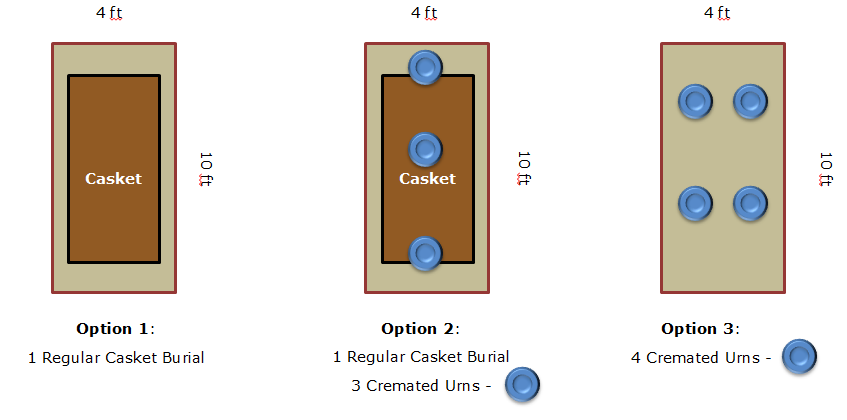
Understanding Cemetery Plot Sizes and Dimensions in North America
When it comes to selecting a final resting place for your loved one, the size and dimensions of the cemetery plot can have a significant impact on your decision. In North America, there are various types of plots available, each with its own unique characteristics and considerations. Let’s dive into the world of cemetery plots and explore the typical sizes and dimensions you might encounter.
Single Plots
The most common type of cemetery plot is the single plot, designed to accommodate one full-body burial. These plots typically measure around 3 feet wide by 8 feet long, with a depth ranging from 4 to 6 feet. This size allows for a single casket to be placed in the ground, ensuring a dignified and respectful final resting place for your loved one.
Double Plots
For families who wish to be buried together, double plots are an excellent option. These plots are designed to accommodate two full-body burials, one on top of the other. Double plots are usually the same width as single plots (around 3 feet) but are longer, measuring approximately 8 feet by 12 feet. The increased depth, usually ranging from 7 to 9 feet, allows for two caskets to be buried vertically, while still meeting cemetery regulations.
Family Plots
If you’re looking for a more expansive option that can accommodate multiple generations, family plots might be the perfect choice. Also known as estate plots or private plots, these larger plots can vary significantly in size, ranging from modest sizes that can hold four to six burials to expansive plots that can accommodate dozens of burials. Family plots provide a dedicated space for your loved ones to rest together, creating a sense of unity and belonging even in death.
Cremation Plots
With the increasing popularity of cremation, many cemeteries now offer dedicated cremation plots. These plots are significantly smaller than traditional full-body burial plots, typically measuring around 2 feet by 2 feet or 3 feet by 3 feet. Cremation plots are designed to accommodate one or more cremated remains, either buried in the ground or placed in a columbarium niche (a structure with individual compartments for urns).

How Plot Size Impacts Selection
The size of the cemetery plot you choose can have a significant impact on your final decision. For example, if you have a large family and want to ensure that everyone can be buried together, a family plot might be the best option. On the other hand, if you’re looking for a more affordable and space-efficient solution, a cremation plot or a single plot might be more suitable.
It’s important to keep in mind that the size of the plot can also affect the type of memorial or headstone you can choose. Larger plots may allow for more elaborate memorials, while smaller plots might be limited to more compact options.
Size Matters: The Impact of Plot Dimensions
The size of the plot you choose can have a ripple effect on your final decision. Here’s how:
- Cost: Larger plots naturally come with a higher price tag. Understanding your needs helps you find the right balance between affordability and space.
- Aesthetics: A larger plot allows for more flexibility in terms of landscaping and personalization. You might envision a small garden or a more prominent headstone.
- Availability: Depending on the cemetery, the availability of different plot sizes can vary. It’s wise to explore options early on to secure your preferred size.
When selecting a cemetery plot, it’s crucial to consider your personal preferences, budget, and the needs of your family. By understanding the typical sizes and dimensions of cemetery plots in North America, you can make an informed decision that best suits your needs and ensures a dignified final resting place for your loved one.

